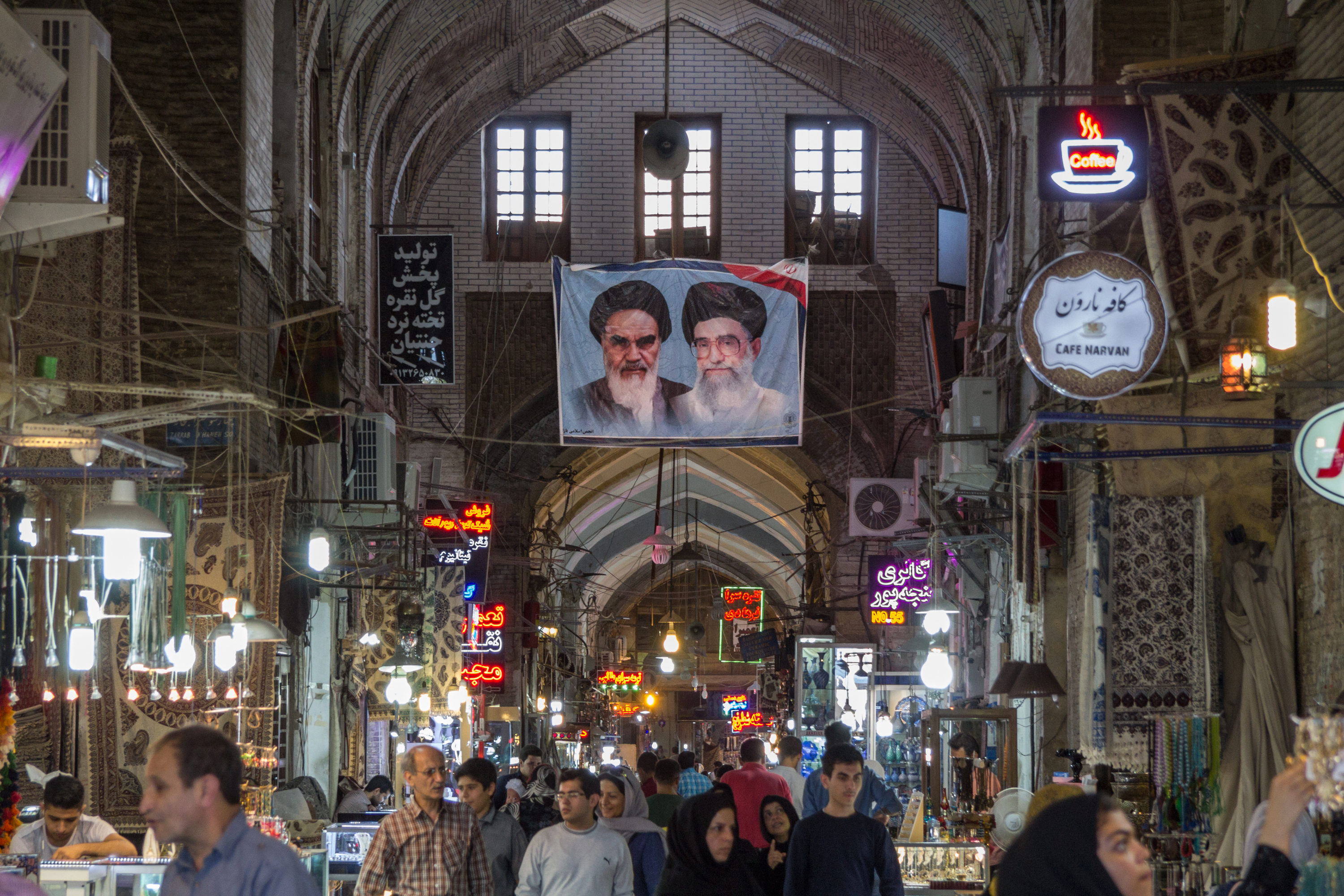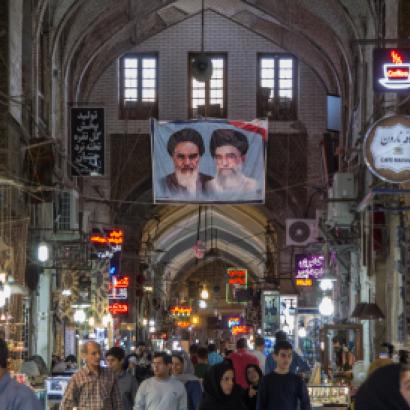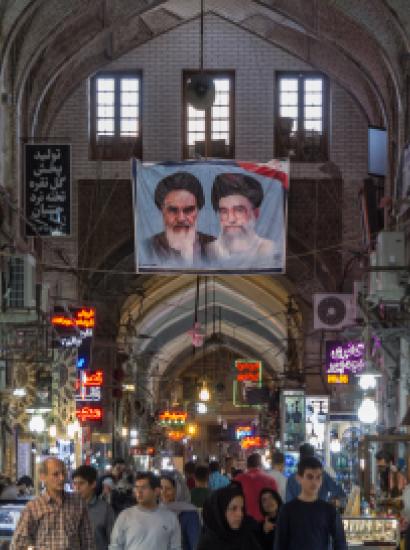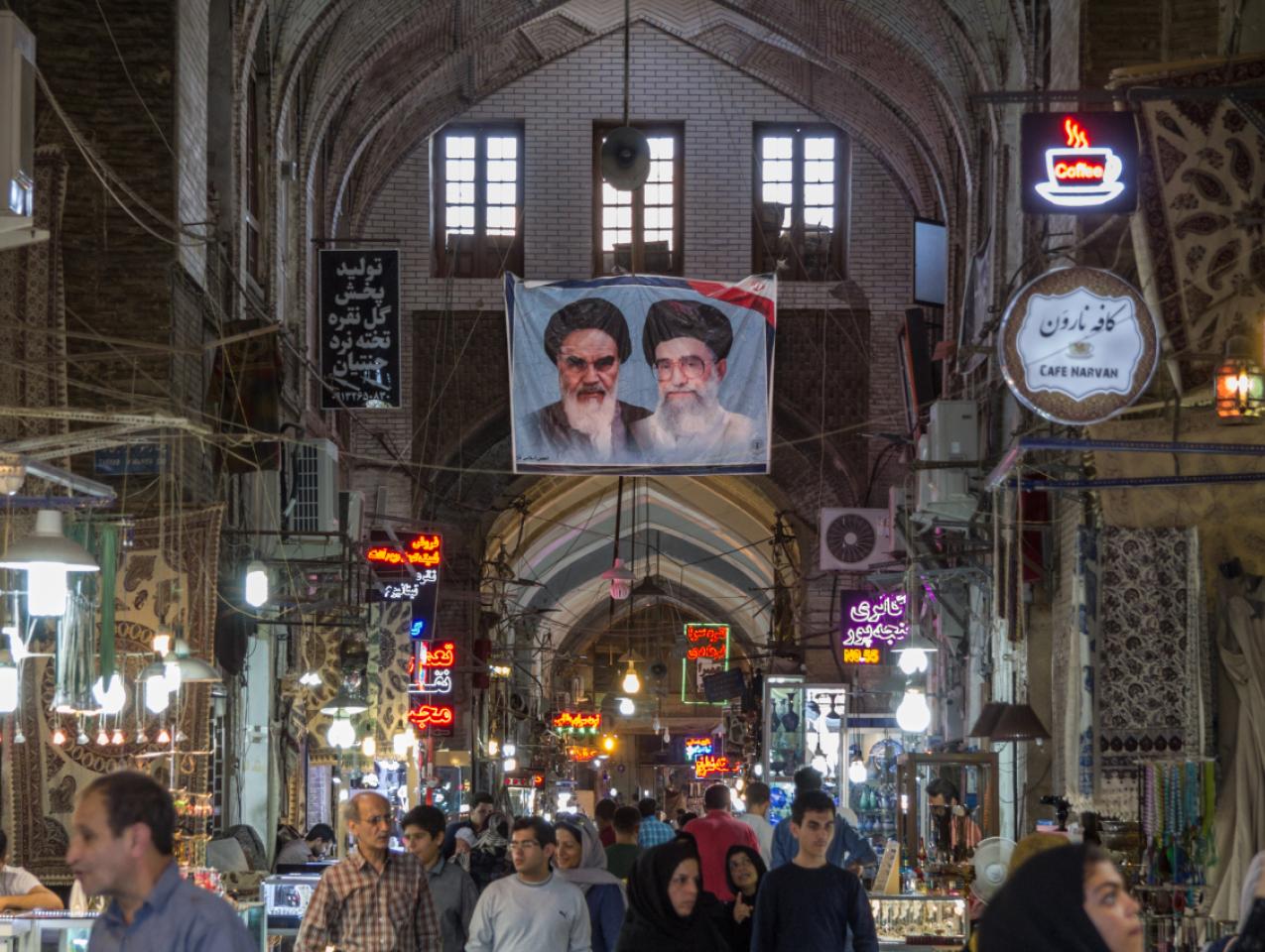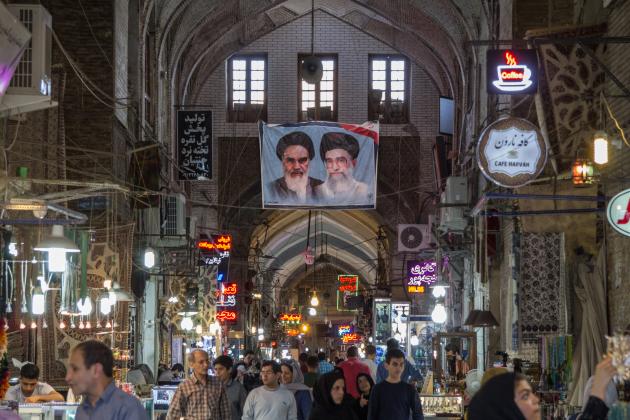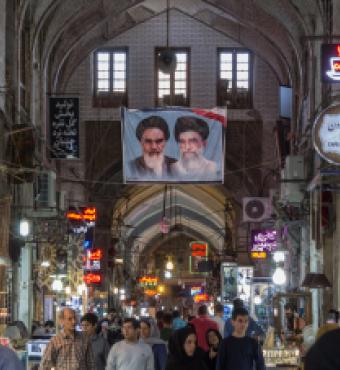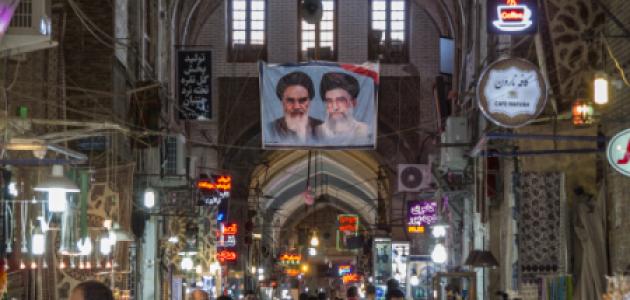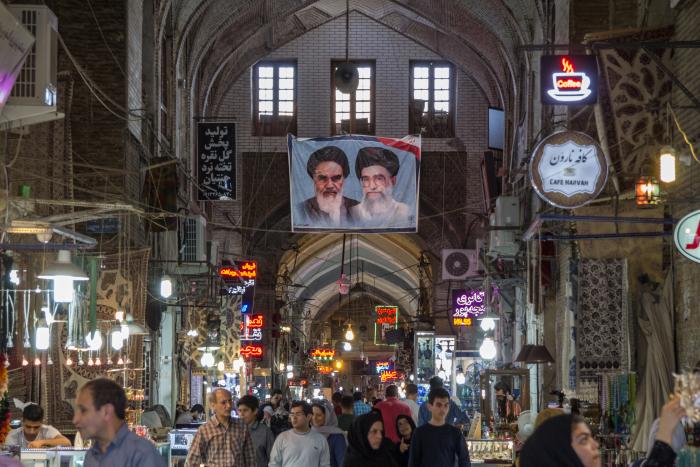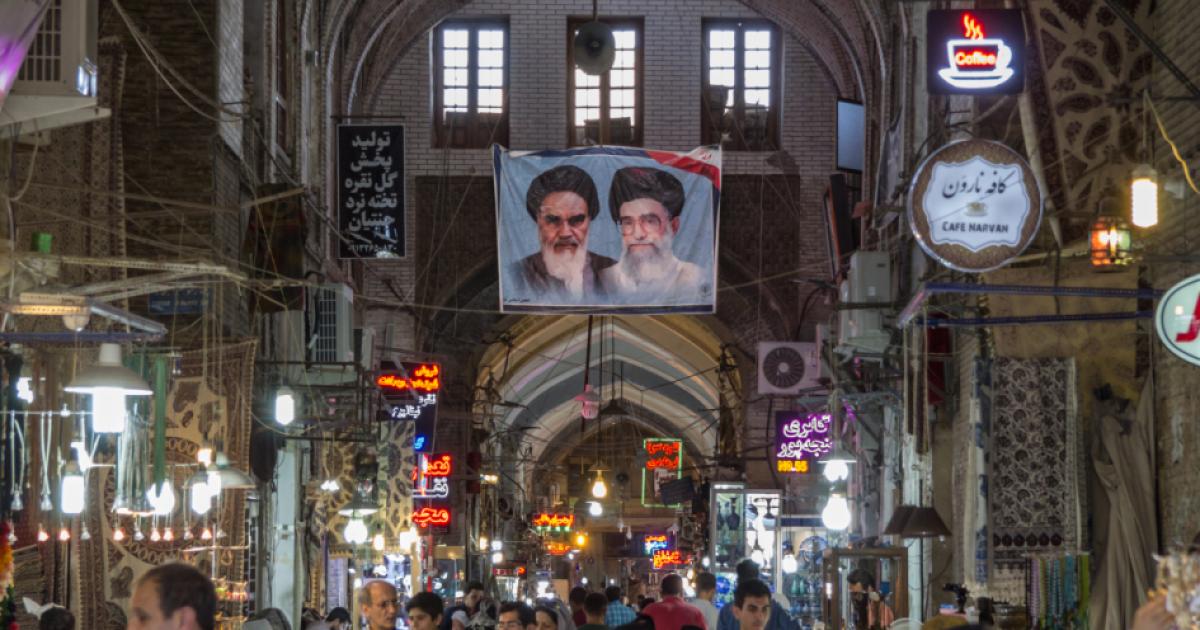On February 11, 2019 Iran will celebrate the fortieth anniversary of the Iranian revolution and the creation of Iran’s Islamic government guided by a clerical leader known as the vali-e-faqih. This anniversary is important for numerous reasons including that the Islamic Republic, having survived many political storms, has outlasted the expectations of many. Under renewed political and economic pressure from US sanctions and Washington’s withdrawal from the Joint Comprehensive Plan of Action (JCPOA) or Iran nuclear agreement, this anniversary has added symbolism for Tehran.
On this day, we should expect to hear laudatory speeches from the Iranian elite led by Supreme Leader Ali Khamenei who will no doubt champion the Islamic facets of the republic as central to the government’s durability—tenets that have been central to his 30-year stewardship. Against the demographic tide and youthful and popular hopes expressed at the ballot box for greater social, cultural and political liberalism, Khamenei continues to hold fast to the values of Islam as being immutable and responsible for the “invincibility of the nation…seen through forty years of resistance.” While many Iranians have grown increasingly cynical and detached from this religious narrative, this messaging cannot be easily sacrificed or discarded. Shiite Islam and the politics of resistance have helped the Islamic Republic navigate its internal changes and international challenges. At the same time, it is also no longer the sole tenet guiding politics and discourse. Exploring the contradictory impact of religious ideology can shed light on how Iranian society and politics have changed.
Riding the tide of nationalism, anti-Western sentiment and anti-monarchical fervor, the promise of justice, independence, and freedom brought together Iran’s disparate and unsuspecting revolutionary groups in 1979. Religion was a useful mobilizing tool for the revolution’s founding father, Ayatollah Ruhollah Khomeini, who refashioned Shiism from its quietist historical tradition to rally and unify the disparate Iranian crowd composed of students, nationalists, Islamists, merchants and clerics for activist political purposes institutionalizing clerical rule through his innovative concept of the velayat-e-faqih or Guardianship of the Jurisprudent.
In addition to the creation of a religious government, Shiite Islam provided the ideological tour de force for a political consolidation of power, the domestic Cultural Revolution imposed after 1979, and a revolutionary foreign policy predicated on resistance that proved durable for the first decade after the revolution. Opposition groups and dissenters against Khomeini’s system were also gradually purged from the political system under the guise of Islamic unity. In the early days of the revolution, Islamic law was codified, streets were renamed, textbooks rewritten and women were subject to new religious norms affecting everything from veiling obligations to their legal stature. The politicization of religion lead to what Olivier Roy called “state Shiism” and “social Shiism” where Shia ceremonies and social life came together. This merger and celebration would not always be widely embraced though as secular and reformist ideas would also gradually enter into the political and popular discourse.
Islam was also a rallying tool during the eight year Iran-Iraq war, 1980-1988, where Khomeini called on Iranians to embrace martyrdom or shahadat in the image of Shia Islam’s Imam Hussein martyred at the 7th century Battle of Karbala. The war defense was named the “defae-moghadas” or “holy defense” and after the 1982 Khorramshahr victory where Iranian forces turned the tide and pushed Iraqi troops out of Iranian territory, Khomeini rejected the offer of peace and instead called not only for the liberation of Karbala, but also that of Jerusalem. This religious imagery could be summoned yet again as Iran faces another ‘holy defense’—this time against the Trump Administration’s anti-Iran strategy.
Even after the war, the Islamic Republic used religious ideology, albeit with less effectiveness, to increase its pan-Islamic and sectarian regional appeal, providing justification for its support for regional resistance based alliances and proxy groups ranging from Shiite Hezbollah and Sunni Palestinian Hamas. While these relationships were strategic and designed to provide Iran with strategic depth, the religious ties cannot be overlooked. The blowback from these polices, however, has increased sectarian divisions and resulted in widespread regional animosity towards Iran’s interventionist policies in the wider Middle East.
Domestically, the Islamic glue began to gradually weaken in the post-war decade. Khomeini famously stated, “We did not make the revolution for cheap melons; we made it for Islam.” At the end of the Iran-Iraq war in 1988 however religious ideology proved unable to address the exigencies of the state. For ordinary Iranians, the economic impact of the war and isolation required a change in strategy that began a growing pattern of semi-economic privatization and tepid engagement with the international community—neither of which has resulted in significant economic improvements.
Today, not far beneath the surface evident in the wave of protests and popular frustration of the past year, there exists a growing chasm between a strong state and a frustrated society, laying bare the failures of the Islamic government to provide for social justice and a government of god on earth. This is evidenced in the growing public disregard for clergy and declining attendance at Friday prayers and mosques. Crossing unspoken red lines, protesters in 2009 and 2018 publically criticized and chanted against the Supreme Leader. Economic mismanagement and endemic corruption have blunted the hopes of a young population, born during the decade of the Iran-Iraq war and after, are less connected to the religious values of the revolution. Compared to the aging hardline leadership, Iran’s youth, although not homogenous, seek international openness and economic integration to offset the effects of oil dependency, mismanagement and income inequality. Foreign investment under the Iran nuclear agreement was Tehran’s strategy to create employment and offset the pressure from below. The US withdrawal from the nuclear agreement however has further exacerbated such frustrations, resulting in a stubbornly high unemployment statistic of 12% that is likely to worsen in the coming months as sanctions take their toll.
Women who have long sought greater social freedom and political and economic inclusion have been rallying through cycles of campaigns. They have seen gradual improvement in the right to enter stadiums and watch soccer and are pushing the boundaries of veiling requirements without much push back from the state. Yet, at the same time, Khamenei remains steadfast in his commitment to Islamic ideology, suggesting that Islam was the solution to Western sexual harassment problems. He stated “By introducing the hijab, Islam has shut the door on a path that would pull women towards such deviation…. Islam does not allow this through the hijab.”
Conservative elites echo this thinking and believe that compromising on Islamic values and the identity of the state will further erode the gains of 1979 and their position within the system. Indeed, there is a factional standoff between strict constructionist conservatives that hold fast to the resistance mentality and fear the “soft war” against Islamic values and revolutionary principles. On the other hand, pragmatists and reformists, who are more supportive of popular calls for liberalization and social freedom, believe that only through reform and international engagement can the Islamic Republic survive the pressures from below.
It is hard to imagine Khamenei compromising on these principles that have been intricately woven into his worldview. Yet at the same time, policy leaders and elites have been gradually diversifying their ideological dogmatism by harnessing Iranian nationalist sentiments as a means to attract wider public appeal. President Mahmoud Ahmadinejad was among the first leaders to publically channel Persian historical pride and nationalism by invoking the leadership of the Achaemenid Empire under Cyrus the Great. Public support for Islamic Revolutionary Guards (IRGC) Commander Ghassem Soleimani also plays on these emotions to justify Iran’s role in fighting the Islamic State. Nationalism will also be invoked as part of the narrative around the Iran nuclear agreement and the need to survive the new sanctions. This might not result in immediate or widespread support for the state, but it may indeed tap into the contradictory nationalistic impulses of ordinary people.
There exists growing evidence of less public devotion to Islam, seen through changing social and cultural norms, and the growth of non-Islamic religious sects and celebrations. Government crackdowns and arrests of Sufis, Bahais and Christians confirm this. Yet at the same time, Shiism remains one among the many components of Iranian identity that cannot be discounted. These widening cleavages and contradictions do not mean that Iran will seek to dramatically detach Islam from the ideology of the republic. Rather, going forth and gradually, Islam will become only one among many strands and themes used to mobilize the people.







